When You Can’t Leave Well Enough Alone
I don’t think many people would argue that Dodge and the maniacs at SRT® hit a home run with the Dodge Challenger SRT Demon, which then carried over to the Dodge Challenger SRT Hellcat Redeye. Coming off the assembly line, the SRT Hellcat Redeye packs 797 horsepower at the crank. That is pretty impressive. But you have to ask yourself, “What kind of person buys a car with 797 hp?”
The correct answer is “A person who wants over 1,000 hp.”
Note: If you like your warranty, don’t continue reading.
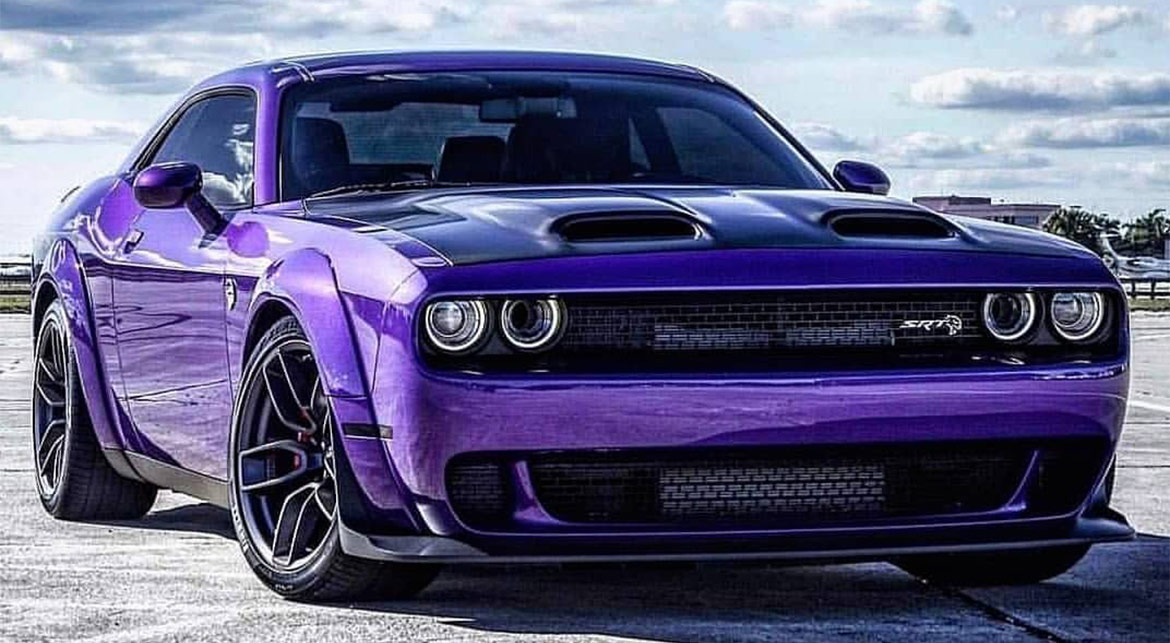
My shop recently had a brand-new Plum Crazy Purple Widebody SRT Hellcat Redeye dropped off to us with one request: “Make it stupid fast.”
It doesn’t take much to make the SRT Hellcat Redeye really scream. Oftentimes, the restrictions put on the OEM for how a car can perform in stock form come from things like emission regulations, liability, reliability, legal and performing in any environment that we – the end user – will put it in. When 797 horsepower just isn’t enough, it’s time to dig in and just get silly. There is one thing to clarify before we get started just in case you may be confused: There are two ways to measure horsepower.
The first is on an engine dyno. This measures the horsepower of the engine as a standalone unit. This is how Dodge – and every other automaker – measures the power of their engines. It does not take into account things like the power loss through the rest of the drivetrain through the torque converter, the transmission, the rear differential and weight/mass of the tires.

The second way to measure horsepower is with a chassis dyno. This is generally how the aftermarket measures and tests cars. It measures how much power is applied at the wheels after any power loss from the other components in the drivetrain. That being said, the SRT Hellcat Redeye makes 797 stock horsepower at the crank, but at the rear wheels, it makes somewhere between 650 and 700 horsepower, depending on the dyno and conditions. The key to dyno numbers is not to get tied up in the before and after numbers. The focus should be on the difference or net gain between the two. Too many factors affect the actual reading itself.
The goal for this SRT Hellcat Redeye was to be 100% streetcar first and foremost. We aren’t building a racecar here. The second goal is to run high 8-second to low 9-second quarter-mile times with a tire change. One of the main limiting factors on where you can go with the supercharged 6.2L HEMI® engine is what type of fuel you are willing to run versus how much boost you can run. The quickest way to more power on this platform is more boost from the supercharger. Due to a whole host of reasons that we won’t discuss here, there are limits on how much boost you can or should run on your standard pump gas. If you want to crank up the boost, you have to run a better fuel. High-octane race gas has been the go-to for years for streetcars. There are some pros to running race gas; however, it’s very expensive, ranging from $8 to $12 a gallon. That wipes out the main goal of keeping this project a streetcar. The more reasonable and modern go-to for many boost addicts these days is E85 FlexFuel. E85 is 85% ethanol, and has all the right goodies in it to run boost for days. The best part about E85 is that its dirt cheap, usually ranging from $1.80 to $2.20 a gallon; cheaper than standard 87 octane. But running E85 will cover 95% of any power need you have on a streetcar. With the owner of the SRT Hellcat Redeye being on board for running E85, hitting our two main goals would be easy.
There are many ways to skin a (hell)cat. We needed more boost. We could have opted for an aftermarket supercharger, but those cost anywhere from $6,000 to $9,000. Instead, we decided to use the stock supercharger, modify and crank more boost out of it. Creating more boost out of the stock supercharger is simple, as it’s just math and some basic physics: spin the rotors faster.
There are three ways to do this. You can add a smaller drive pulley on the supercharger, add a larger harmonic balancer on the crankshaft or, if you are wild, do both. We did both.
We opted for a Litens Hellraiser 2.72” decoupling pulley that functions the same as the stock Litens Hellraiser pulley, but makes more power. We also added an ATI 10% overdrive harmonic dampener to spin that little 2.7L blower even more. In stock form, the supercharger cranked out roughly 14 psi of boost. After spinning it faster, we were able to produce roughly 22.5 psi of boost. That is a hefty increase.

Keeping engine temps down is another cheap and easy way to maximize those ponies. The easiest way to do this is with a simple coolant thermostat swap. Since the 5.7 HEMI engine came out over 15 years ago, mod addicts have been swapping out the stock thermostat that runs at roughly 210 degrees for a 180-degree thermostat. This drops engine coolant temps 30 degrees and helps the motor run cooler, maximizing power. We opted for a Mishimoto 180-degree thermostat. Along with some fan adjustments in the PCM calibration, it can work wonders.
Since we opted to run E85, we needed to make some upgrades to the fuel system. These are relatively easy on the SRT Demon and SRT Hellcat Redeye. E85 uses about 30% more fuel than 93 octane. This means we need to be able to flow much more fuel. Luckily, the SRT Hellcat Redeye comes equipped with dual fuel pumps right off the assembly line. They are capable of pumping incredible amounts of fuel. We just needed to add a little help to them by increasing the voltage to those pumps to make them spin just a little faster. A Kenne Bell “Boost A Pump” was used to achieve this. It’s a simple module that increases voltage to the fuel pumps when boost is sensed. It’s extremely simple and basic, and compared to replacing the fuel pumps and basket assembly, much faster and cheaper.
To go along with the increased fuel needs, we needed to upgrade the fuel injectors. There is some science involved when sizing injectors. Simple factors like elevation and temperature come into play with making sure you have a large enough fuel injector for the system. To make sure we had enough to cover the car’s fuel needs at any ambient temperature and elevation, and to run E90 when we really want to push it, we chose Injector Dynamics 1700X fuel injectors that are sized at a whopping 1,700cc and built with internals that won’t be damaged by high ethanol content fuel.
With the engine pushing so much more air and power through it, we needed to help all that goodness make its way out of the tailpipe. While we have done plenty of these builds using the stock exhaust system, this SRT Hellcat Redeye owner wanted a little something extra. A set of Hooker long tube headers and connecting pipes were mated up to a Hooker cat-back exhaust system. The combo would ensure we are flowing all the exhaust out of the back of the car as efficiently and less restrictive as possible. And if you hate your next-door neighbor, it has the perfect sound to make sure they know.
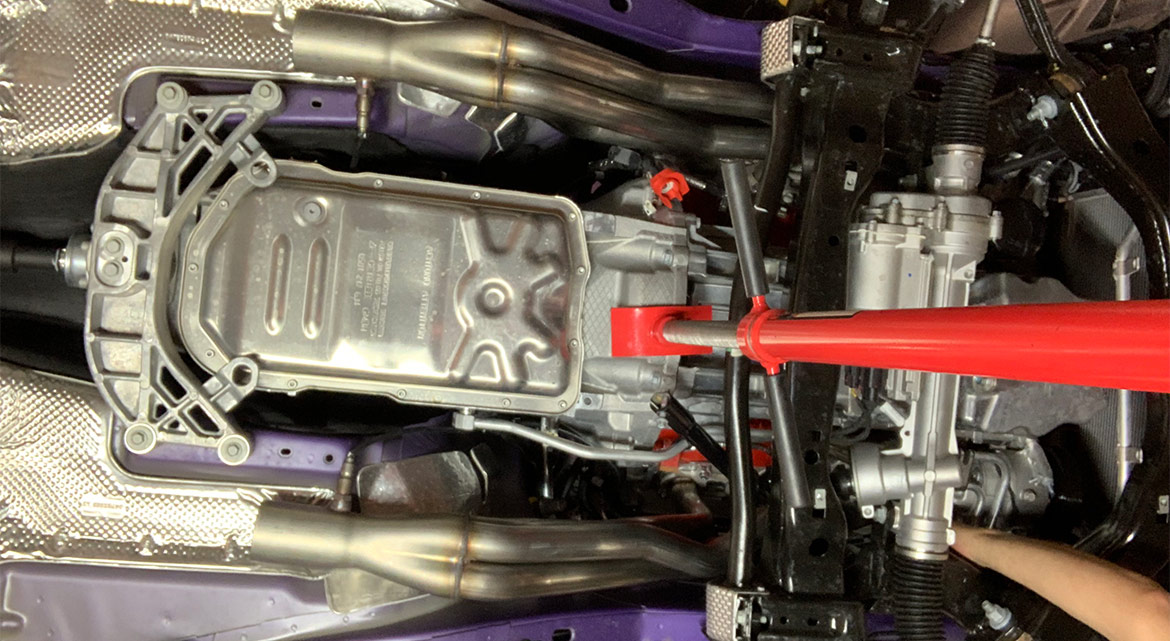
Another important modification was made to the car for the main purpose of helping it on the track. Heat rises. All those ponies stirring around the engine bay make for a lot of heat. After a run at the drag strip, the car sits basking in the sun with all that heat raising up front the engine across the top end of the motor and supercharger heat soaking the intake tract. It takes a considerable amount of time to drop the physical temperature of the supercharger back down to a level where ideal intake air temps are achievable. An aluminum supercharger sitting on top of aluminum heads with scalding hot headers mounted to them simply turns the supercharger into a giant heat sink. We sourced a set of FI Interchillers supercharger spacer plates and heat blanket in an effort to help prevent this. The spacers help prevent heat transfer from the heads to the supercharger, which lowers heat soak and drastically cuts down cool-down time. The insulation blanket helps reject heat from the top of the motor. The result is lower and fast intake air temperatures that directly relate to miles per hour at the strip. Simple and effective.
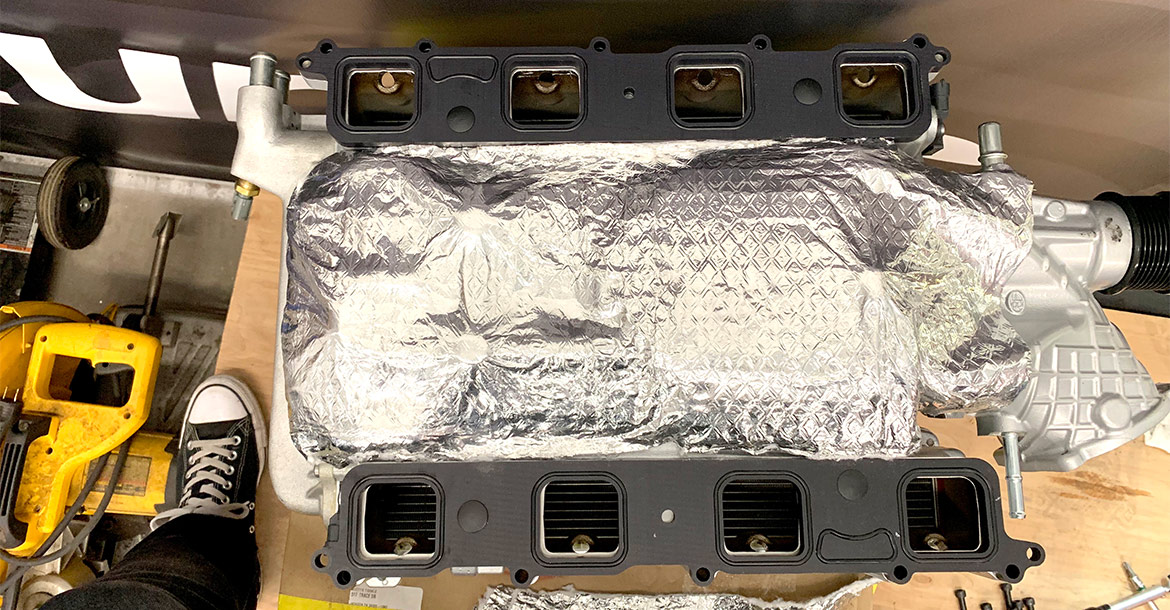
Finally, none of these parts will work at all without a good calibration. That can often be the most challenging part. Always seek the expertise of an experienced tuner when modifying your car. One small error could cause catastrophic results.
Each year, tuning logic changes on these cars and there is usually a learning curve with each new model year. The SRT Hellcat Redeye was no different. Initially, we assumed it would be the same calibration as the SRT Demon; however, that turned out to not be the case at all. We won’t go into the details of tuning other than to let you know why it’s needed.
After tossing this many parts on the car, changing fuel type, boost levels, power levels and overall performance of the car, you have to program the computer to function and command properly with the new components. Just like throwing a new carb on an old 426 HEMI engine and having to tune the carb, turning a few screws to get the perfect blend of air and fuel. It’s JUST like that. Actually, no it isn’t, really. It’s like being a rocket scientist, mechanic and software developer all in one. There are thousands upon thousands of settings and codes driving that fire-breathing monster. Every setting in there has to be in perfect harmony with each other. If they aren’t, best case is the car won’t run, and the worst case is “kabooooom!” Needless to say, the car was finished up with a conservative tune to utilize all the new parts, running on pump E85 and a ripping transmission tune.
The end results?
On the particular day that we made a baseline pull on our chassis dyno, the 2019 SRT Hellcat Redeye cranked out 663 horsepower and 637 torque to the rear wheels. The numbers seemed a bit soft, but considering it being close to 90 degrees and high humidity, it could be close. But again, we don’t care so much about the starting numbers or the ending numbers themselves. We are interested in the increase between the two. After all parts were installed and the tune honed in, this purple monster ripped out 905 horsepower and 967 torque at the rear wheels on an equally hot and humid day on the same dyno. That’s an increase of 242 horsepower and 330 lb.-ft. of torque at the wheels with a few small bolt-on parts. The car still maintains 100% street drivability, comfort and features, and it even runs on fuel cheaper than 87 octane. It can be driven to the track with air conditioning, comfy leather seats and a ripping 18-speaker audio system, and tear down the track at 150 mph and low 9-second elapsed times.
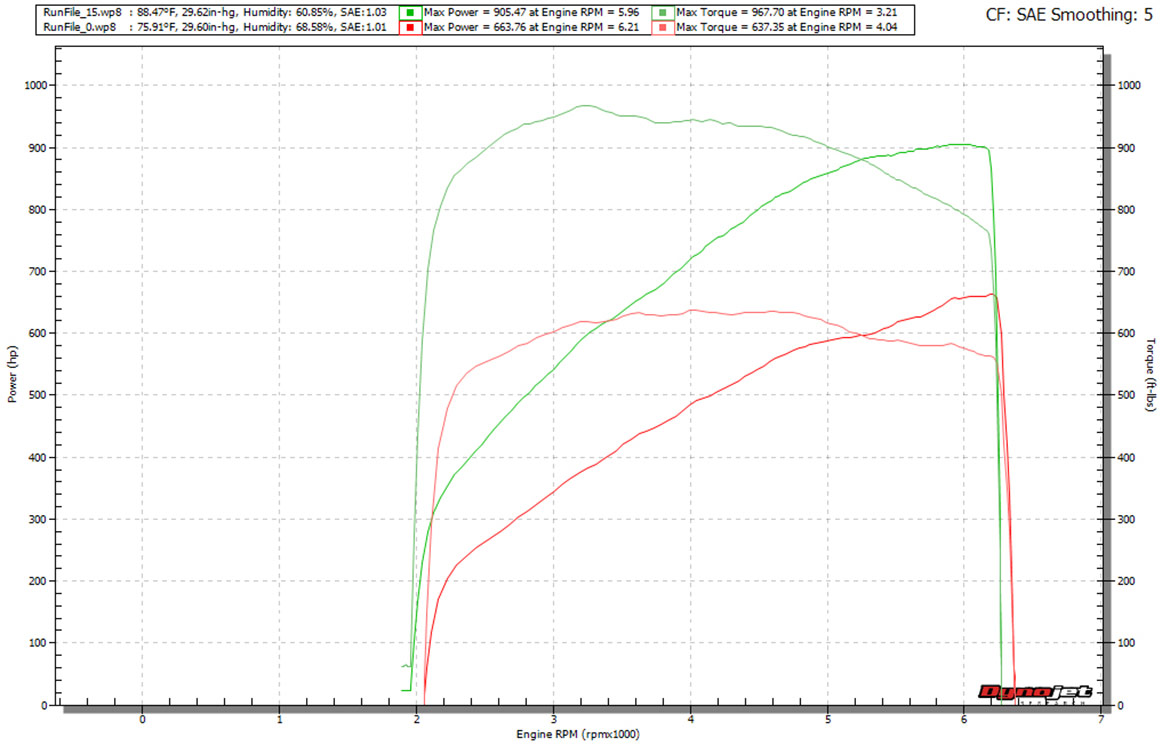
Is it overkill? You better believe it!
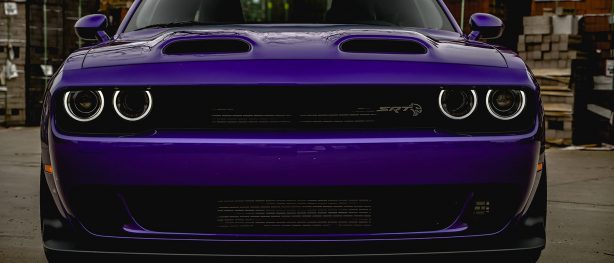
0 Comments